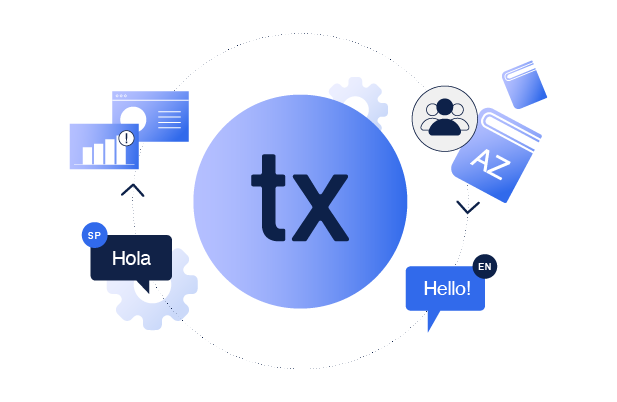
How to Quickly Measure & Maximize your Localization ROI
The localization ROI can be measured by taking revenue attributed to localization, divided by the investments, and multiplying the result by 100. Straightforward and simple, right?
Except, when we start taking into account all of the benefits and investments, measuring the impact of localization becomes a challenging task. Hence why a business needs to know specifically where to look to make a reasonable projection.
Here is how to measure the localization ROI and how to maximize it!
Quantifiable and Unquantifiable Localization Benefits
One of the reasons that measuring the ROI of localization can be tricky is due to unquantifiable benefits that impact the business revenue. Think of metrics such as impact of localization on customer satisfaction, market share, customer support, etc.
This means that in order to get a more accurate projection, you need to focus on quantifiable metrics. The clearest benefits are:
- Higher website traffic as a result of international SEO
- Higher conversion rates as a result of personalized content
The impact of international SEO will vary depending on the industry and the locales a business targets. Consult your SEO specialists to get a traffic estimation.
As far as conversion rates are concerned, based on case studies from companies such as WishTrip, we can safely assume a visitor-to-lead conversion rate of 30%.
Measuring Localization Investments
The next piece of the puzzle for measuring the localization ROI is taking into account localization investments.
Regardless of how you approach localization, your business will most likely have to invest in the following:
- Human resources
- Localization software
- Content translation
More specifically, human resources include a localization manager, translators, reviewers, engineers, and possibly more. The size and roles will differ depending on the scale of the business and how aggressively one wants to grow.
Smaller businesses, for example, tend to trust localization to their existing engineers while assigning the role of product or marketer as the localization manager. While those who want to scale more aggressively will most certainly need a dedicated team to handle the workload.
No matter the size of the team, another very important investment is localization software. To be more precise, a Translation Management System is of the utmost importance for enabling the localization team to work more efficiently and automate a big part of the workload. More about this in the below chapters.
Last but not least, localization expenses scale for both human resources as well as software, depending on the amount of content that needs to be localized. That rule stays true regardless of how the translators of your choice get reimbursed, be it per word, hourly, or on a salary.
Measuring the Localization ROI
Measuring the localization ROI follows the typical ROI formula: net revenue/cost of investment * 100. The challenging part is figuring out the impact that localization makes in revenue.
Based on the aforementioned benefits and investments, we can safely make a projection on how localization will impact revenue.
For example, assume we are dealing with a company that:
- Targets Spain with 1,200,000 traffic per year
- A visitor to lead conversion rate of 1%
- A lead to customer conversion rate of 5%
- 12000 leads per year
- 600 customers with an average revenue of $10,000 per customer
- An annual projected revenue of $6,000,000
We can start with the benefits: international SEO and an increased visitor to lead conversion rate.
For international SEO, we can assume a reasonable 5% traffic increase and a 30% increase in visitor-to-lead conversion rate.
With that in mind, we can then calculate what the end result is going to be in a year if we invest into localization:
- 1,260,000 traffic (Due to international SEO)
- 16380 leads (Due to the increased traffic & conversion rate)
- 819 customers (Assuming only the visitor to lead conversion rate increases)
- Revenue= $8,190,000
In other words, that is an additional revenue of $2,190,000 via localization benefits.
The one thing missing to calculate the localization ROI now is the investments.
- Human resources: $130,000 (Localization manager, engineering, etc)
- Localization software: $7,800
- Content: 500,000 words * 0.11c per word: $55,000
Total = $192,000
So now we can take the revenue, divide it by our investment, and calculate the localization ROI.
Thus, the localization ROI of the above example is: $2,190,000/192,000 * 100 = 1140%
How to Maximize Localization ROI
To maximize your localization returns, make sure to follow the best localization strategy practices.
- Target markets with the highest demand for your product/service
- Apply the best international SEO practices
- Solve technical challenges, such as internationalization, before moving on to localization
- Ensure the localization team has everything they need to collaborate efficiently
- Prioritize content that needs to be translated the most
Utilizing a Translation Management System will help a lot with most of the necessary steps.
To be precise, a Space Ape case study highlights a reduction of 20% in turnaround time, due to the increased efficiency of the localization team. That’s a 20% reduction in your human resource costs.
Furthermore, localization tools, such as Translation Memory can severely increase the ROI by reducing the sum that needs to be invested in content/translators.
To be more precise, according to data from Transifex customers, Translation Memory generally leverages 40-60% of the provided content.
After factoring all of that in, the necessary investments go down to $144,000, resulting in an ROI of 1520%, up from 1140%!
Wrapping Up
Overall, you can measure your localization ROI by taking into account how its benefits impact your revenue, divide it by the investments made into it, and multiplying by 100.
Then you can maximize your results by following best localization practices and
Need more details about how to precisely measure your localization ROI, localization benefits, as well as how a TMS increases your ROI?
Take a look at our full guide on measuring and maximizing localization ROI!
Related posts
How to Cut Localization Costs by up to 40%
Localization Strategy Development With a Global Strategic Vision










